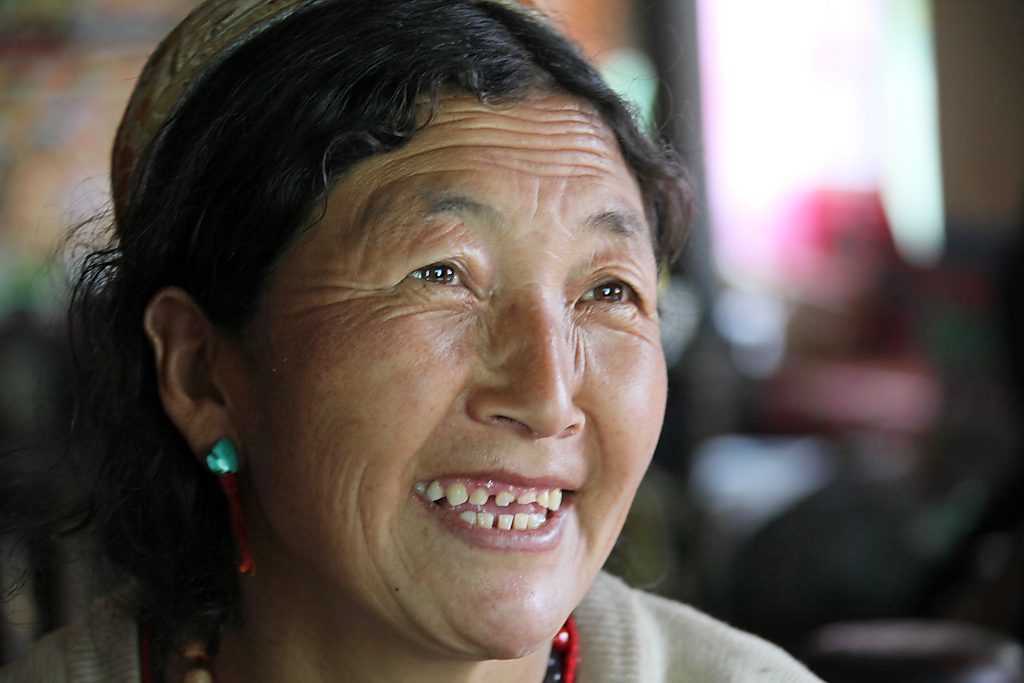
2014 AHA: smartphone boosts CVD management in poor settings
As mobile technology has been getting advanced nowadays, smartphones not only improve the efficiency of communications, but also boost the efficiency of health management especially for those living in resource-limited areas.
At 2014 American Heart Association Scientific Sessions held in Chicago, Dr. Maoyi Tian from The George Institute for Global Health at Peking University Health Science Center presented the main results of the Simplified Cardiovascular Management (SimCard) intervention carried out in Tibet, China and Haryana, India on behalf of the research team. This was the first trial that use Electronic Decision Support System (EDSS) based on smartphone to manage local high-risk patients with cardiovascular disease (CVD) in China. The results showed that the simplified intervention was efficient and feasible in improving the management of the high-risks and drew great attention.
“Compared to the urban area, resource constrained settings like Tibet and rural India are facing much severer non-communicable disease burden.” said Dr. Tian, “The prevalence of hypertension is as high as 56% in herdsmen population in Tibet. However, only 19.9% of the herdsmen are aware of their conditions. The rates of treatment and control found in this population are also very low.”
To tackle the health problem, the study team developed and evaluated the feasibility of a simplified CVD management intervention based on smartphone. With the help of EDSS, village doctors and healthcare workers can better manage those high-risk patients by providing lifestyle recommendations and prescribing appropriate medications.
This one-year intervention enrolled 2086 high-risks in 47 villages from Lingzhi county and Gongbujiangda county, Tibet, China, and Haryana, India. The patients (1036 from China and 1050 from India) were randomized to intervention and control groups. The follow-up showed that after the intervention, the quality of primary care in resource-limited settings was improved. Both village doctors and patients' behaviors in increasing uptake of evidence-based medicine (anti-hypertensive medication and aspirin) were effectively changed. An increase in the awareness of high salt harm among villagers and a reduced systolic blood pressure of 2.1 mmHg were also detected.
The intervention strategy was adapted to different cultures in the two countries with active engagement of the healthcare workers. With the support of advanced mobile technology, it could bring real impact to the high-risk patients and provide scientific evidence to reduce disease burden in resource-constrained settings.”
Dr. Tian said, “The whole study team was excited about the impressive result. And we hope to scale up this model in Tibet, and to advice the local health policy makers to implement this simplified and efficient CVD management strategy.”
Dr. Tian also expressed his opinion on the popular topic nowadays - mHealth, “With the fast development of communications technology, it is imperative that health management will be delivered by mobile health innovations and implemented at communities and homes. It will not only alleviate the burden of increasing number of patients visiting hospitals, but also provide efficient and standard disease management to the patients in a short time.”
Dr. Valentin Fuster, director of New York Mont Sinai Heart, was invited to be the discussant for the study. He congratulated the research team on overcoming many hurdles in regard of geographical issues and resource constrained environment in conducting this ambitious study and acknowledged the positive results it achieved. He also pointed out that while the study confirmed the feasibility and detected difference in systolic blood pressure, there were more opportunities to make the study more than a feasibility exercise.



